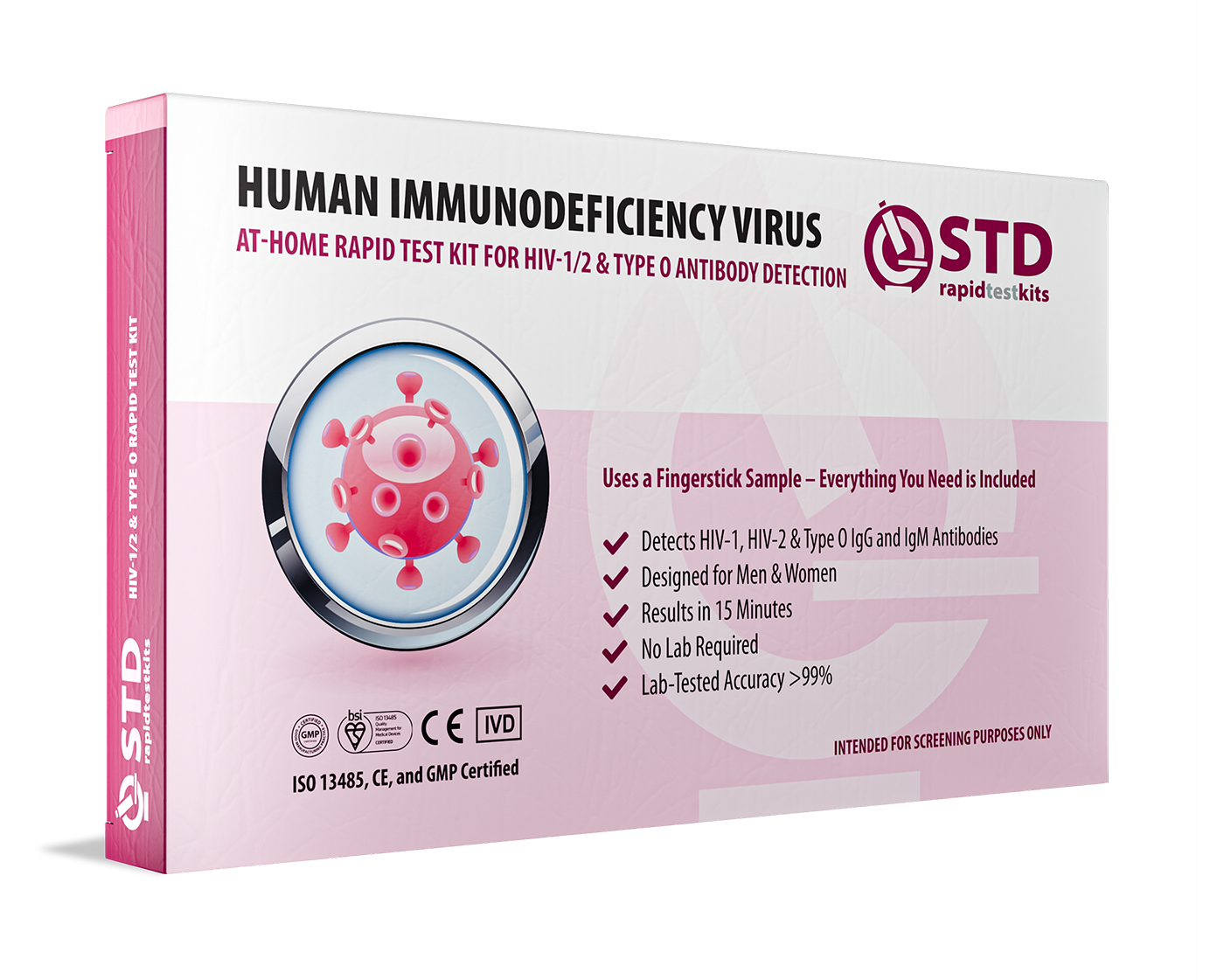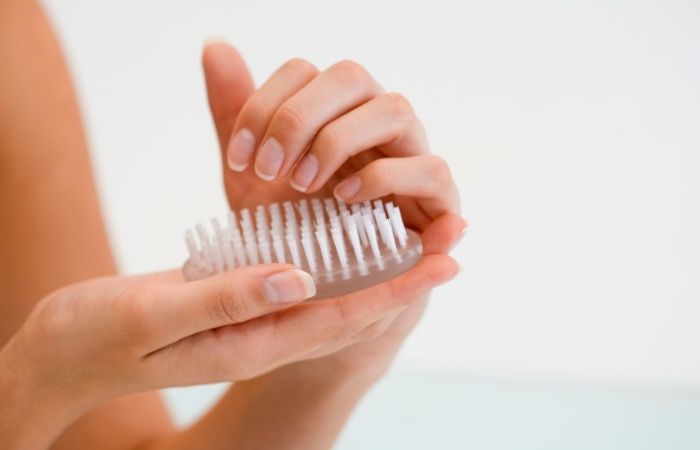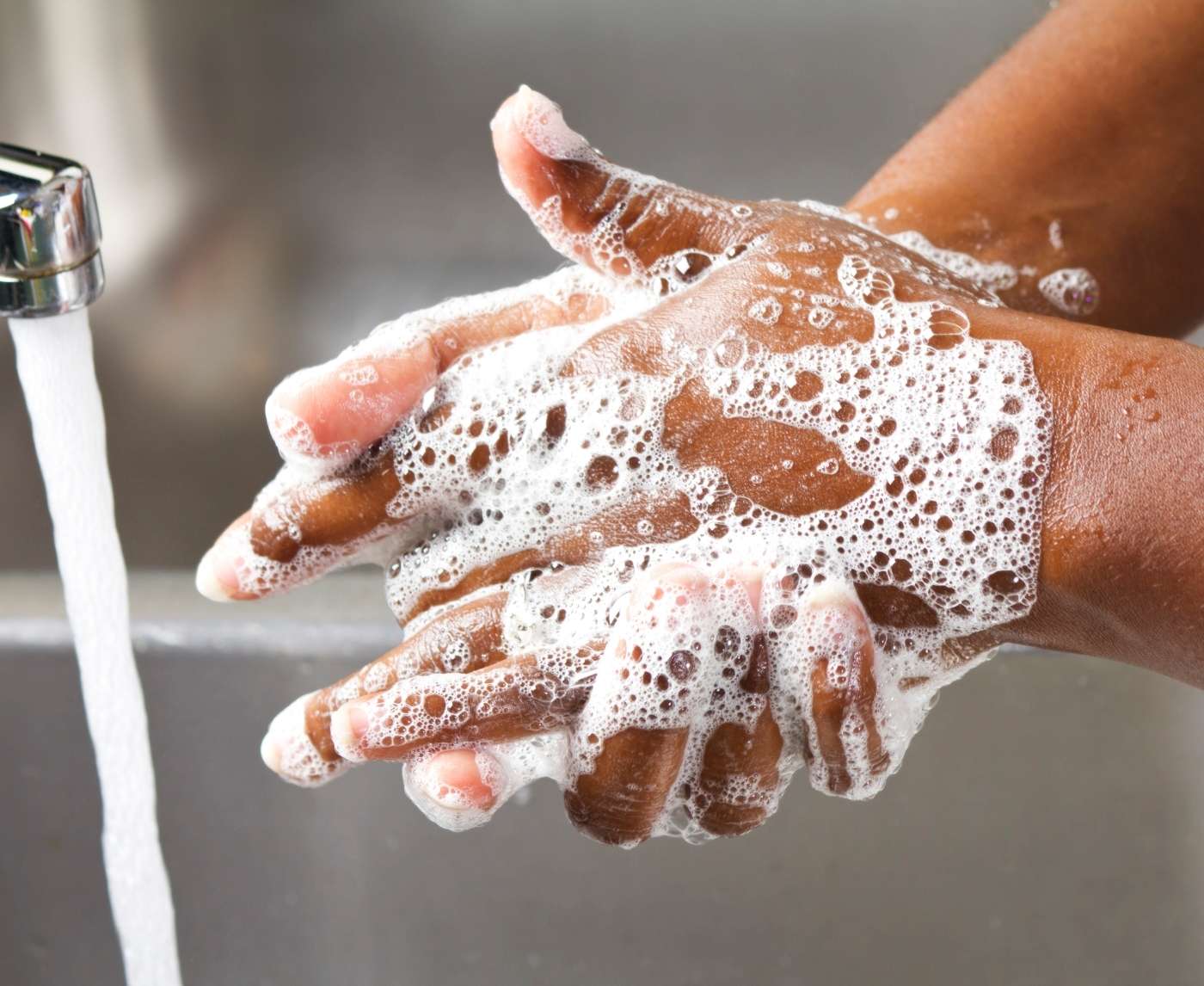Why Tiny Skin Breaks Matter (Micro-tears 101)
Your genital and anal mucosa is thinner than the skin on your forearm, think single-ply tissue versus cardboard. Even a passionate friction session without lube can create microscopic tears invisible to the naked eye. Chlamydia, gonorrhea, and HIV exploit these pin-prick portals almost immediately. A 2022 study found that animals with pre-existing epithelial damage were up to five times more likely to contract simian-HIV after exposure.
- Symptom: You may never feel a thing, no pain, no bleeding, no clue.
- Hidden danger: Even latex can fail if the lube you use dehydrates tissue, creating tears under the condom edge.
- Prevention tip: Prioritize generous lubrication and slow buildup so the tissue stays hydrated and elastic.
According to the CDC, “micro-abrasions remain one of the most under-recognized pathways for STI entry,” especially in receptive anal sex where the rectal lining is a single cell layer thick. Let’s fix that.

People are also looking for: Chlamydia During Pregnancy: The Silent Infection That Nearly Took My Baby
Lube: The Good, the Bad, the Hyper-Osmolar
Not all slickness is created equal. Hyper-osmolar water-based lubes (think cheap drugstore brands marketed as “warming” or “tingling”) pull moisture out of your cells like jerky in a dehydrator. A landmark 2014 paper in AIDS Research & Human Retroviruses showed some hyper-osmolar formulas caused up to 60% epithelial cell death in vitro, boosting HIV replication rates.
- Low-osmolality MVPs: Aloe-based lubes (Sliquid H₂O), medical-grade hydroxyethylcellulose gels, and many silicone formulas.
- Watch-list: Products listing glycerin, propylene glycol, or sorbitol among the first three ingredients often spike osmolality.
- Condom chemistry: Oil breaks latex; silicone and water-based are safe with condoms, but silicone eats some sex-toy materials. Read labels.
Want a safer starting point? The WHO lubricant safety note recommends products below 1,200 mOsm/kg for anal sex and below 380 mOsm/kg for vaginal sex. Brands rarely print osmolality, so check independent lab charts, then keep a bottle bedside. Dry friction is not a flex.
Condom + Lube Chemistry: Love Story or Break-Up?
Condoms need lube like cars need oil. Yet a Planned Parenthood survey found 34% of users skip it, usually due to misinformation about “condoms coming pre-lubed.” That factory-applied layer counts for about two strokes of friction. Without supplemental lubrication, latex weakens: a 2023 study in Sexually Transmitted Diseases documented a 16% rise in microscopic condom breakage when no extra lube was added.
Formula matters here too:
- Water-Based: Safe for condoms and sex toys; re-apply often, it dries fast.
- Silicone: Ultra-slick, long-lasting, condom-safe; can degrade silicone toys over time.
- Oil: Coconut feels lovely but shreds latex. Reserve for nitrile or polyisoprene barriers, or zero-barrier solo play.
If irritation persists after lube use, look for hidden skin-stripping additives like menthol or benzocaine. Your mucosa isn’t a numbing novelty.
Check Your STD Status in Minutes
Test at Home with RemediumHIV Rapid Test Kit

 For Men & Women
For Men & Women Results in Minutes
Results in Minutes No Lab Needed
No Lab Needed Private & Discreet
Private & DiscreetOrder Now $33.99 $49.00
Shaving, Waxing, and the Pubic Hair Debate
Going full Brazilian may feel fresh, but every swipe of the blade multiplies your micro-tear real estate. A 2021 The Lancet dermatology meta-analysis linked frequent pubic hair removal to higher HSV-2 and HPV prevalence, largely due to ingrown hairs and folliculitis. Pubic hair isn’t dirty; it’s protective, trapping pathogens and reducing friction.
- Trim smart: Use electric trimmers with guards to avoid direct skin contact.
- One-way blade policy: If you must shave, never share razors and swap blades every 5–7 uses to keep them sharp.
- Calm the dermis: Post-shave, apply fragrance-free aloe gel or 1% hydrocortisone to reduce inflammation, less redness equals fewer entry points.
Still waxing? Ensure salons use single-use sticks and disposable sheets. Double-dipping wax spatulas can spread Molluscum contagiosum and bacterial infections just as fast as sex.
Shared Razors & Blood-Borne Viruses
The phrase “Don’t fear the beard, fear the blade” exists for a reason. Viral loads of hepatitis B can survive on dried blood for at least a week, and researchers have PCR-detected viral DNA on communal razor blades in barbershops (Virology Journal). A documented CDC case report even traced an HIV infection in a teen athlete to sharing a razor after practice.
Here’s your action plan:
- Rule #1: Razors are toothbrush-level personal. No sharing, even with partners.
- Disposal: A covered sharps container at home stops curious roommates from “just borrowing” your blade.
- Barbershop protocol: Verify single-use blades or professional sanitization (hospital-grade disinfectant or autoclave at 121 °C for 15 minutes).
Fingernails, Hangnails & Cuticles: The Surprising STI Gateway
Your hands are front-row participants in most sexual encounters, yet they rarely get the same TLC as genitals. A single jagged cuticle can act like a hypodermic needle, scraping partner tissue and delivering pathogens hiding under the nail bed. Herpes simplex and HPV love keratin: a 2020 Journal of the American College of Surgeons review of 79 “herpetic whitlow” cases traced 62% to digital-genital contact.
- Pre-game check: Run your pads over denim, if threads snag, file those edges.
- Sanitize: Scrub under nails for 20 seconds; rubbing-alcohol swabs cut bacterial load by 99.9%.
- Moisturize: Dry hangnails tear faster; a nightly dab of fragrance-free balm keeps cuticles intact.
- Barrier play: Nitrile gloves + lube turn fingering into a spa glide and trash the STI risk from micro-scratches.

People are also looking for: HIV Shots Work in Seniors, Here’s What It Means for Testing
Manual Sex: Gloves, Dental Dams & DIY Hacks That Actually Work
“Hand jobs are safe, right?” Mostly, until bodily fluids meet broken skin. Condom manufacturer field data show visible abrasions on 11% of penises after vigorous un-lubed manual stimulation. Syphilis and gonorrhea bacteria can slip into those nicks if infectious secretions land there.
- Nitrile gloves: Cheap, hypoallergenic, and textured options add fun grip.
- Lube-up: Coat the glove inside & out; less friction, more sensation.
- DIY dams: Cut the tip off a condom, then slice lengthwise, voilà, a thin shield for vulva-to-mouth play.
- Cotton wristbands: Sweat catcher + emergency wipe so lube doesn’t migrate to bedding and reduce condom integrity.
Remember: gloves come off inside out; wash hands before touching eyes or phone screens where viruses can linger.
Ingredient Watch-List: 4 Red Flags Hiding in Your Nightstand Bottle
Marketing promises silk, but some lube labels read like a reagent shelf. Here are the worst offenders:
- Chlorhexidine: An antiseptic that nukes lactobacilli, upsetting vaginal pH and boosting bacterial vaginosis recurrence by 2-fold.
- Nonoxynol-9: Once hyped as “sperm-killer,” now known to cause epithelial sloughing that HIV exploits.
- Parabens: Estrogen-mimicking preservatives linked to epithelial thinning in rodent cervix models.
- Artificial scents: Limonene and linalool oxidize into skin sensitizers; dermatitis equals more scratching, more tears.
Water-Based vs. Silicone vs. Hybrid: Which One Fits Your Sex Life?
Choice paralysis is real, so let’s map options to scenarios:
| Scenario | Best Lube Type | Why |
|---|---|---|
| Quickie, vaginal | Water-based low-glycerin | Easy clean-up; preserves natural microbiome |
| Extended anal play | Medical-grade silicone | Long-lasting; reduces condom shear |
| Shower sex | Silicone | Repels water; remains slick under spray |
| Toy time (silicone toys) | Water-based HEC gel | Won’t degrade toy surface |
| Fertility trying | Iso-osmolar hydroxyethylcellulose | Sperm-friendly; pH-balanced |
Hybrids blend water + silicone so you get the longevity without the clean-up hassle, great for marathon sessions but test on a small patch first; some users report itching.
Check Your STD Status in Minutes
Test at Home with Remedium10-in-1 STD Test Kit

 For Women
For Women Results in Minutes
Results in Minutes No Lab Needed
No Lab Needed Private & Discreet
Private & DiscreetOrder Now $189.00 $490.00
For all 10 tests
Aftercare & Barrier Repair: Closing the Doors You Just Opened
Great sex isn’t over at orgasm; healing starts now. Studies on post-coital tissue show inflammatory cytokines remain elevated for up to 12 hours, widening STI “opening hours”.
- Cleansing: Warm water rinse, skip soap inside vulva or rectum; harsh surfactants strip the lipid barrier.
- Soothing: Apply a pea-size dollop of 1% allantoin or panthenol cream; proven to cut micro-fissure healing time by 30%.
- Hydration: Drink 500 ml water; mucosa rehydrates from the inside out.
- Sleep in cotton: Synthetic fibers trap moisture and bacteria; natural fibers let things breathe.
- Test at the right interval: For chlamydia & gonorrhea, 14 days is the earliest reliable window.
Pro-tip: A thin layer of 1% topical clotrimazole after condomless vaginal sex can prevent yeast overgrowth without affecting condom integrity, talk to your pharmacist first.
Grooming Tool Hygiene: Disinfect, Replace, Repeat
Your razor, trimmer, and cuticle clippers are basically surgical instruments, treat them that way. Residual skin cells and moisture create a cozy nursery for Staphylococcus aureus, HPV, and blood-borne viruses. A 2024 Dermatologic Therapy audit of 120 home shaving kits found viral DNA on 17% of blades older than three weeks.
- Step 1: Rinse blades under hot water immediately after use, no hair clumps left behind.
- Step 2: Immerse metal heads in 70% isopropyl alcohol for 10 minutes. Air-dry on a clean towel.
- Step 3: Store in a vented, dry case. Humid bathrooms accelerate rust and pathogen growth.
- Step 4: Replace disposable razors every 5–7 shaves. Dull steel equals more nicks.
- Step 5: Label personal tools with nail polish or tape, zero chance of “mix-ups.”
Clipper care matters too: autoclave-level heat is unrealistic at home, but a five-minute boil followed by alcohol spray slashes bacterial load to near-zero. If you nick yourself, clean with mild soap, dab povidone-iodine, and cover until healed. Remember, the combo of a fresh cut and shared fluid is what turns a grooming slip into an STI exposure.
The Couples’ Toolkit: Sync Your Lube & Grooming Habits
Safety doubles when both partners play by the same rules. Yet a 2025 YouGov poll showed only 38% of couples discuss grooming and lube preferences before first sex. Communication gaps can leave one partner unknowingly using a hyper-osmolar lube while the other sports micro-abrasions from yesterday’s shave, an STI cocktail.
Make it easy:
- Create a “bedside caddy”: Stock two razors (color-coded), a low-osmolality lube, nitrile gloves, and alcohol wipes.
- Set a standing date: Replace blades and deep-clean toys the first Sunday of every month, add it to your shared calendar.
- Talk triggers: If one partner gets irritation, pause penetrative play and switch to external stimulation with gloves until healed.
- Plan joint testing: Use a Combo STD Home Test Kit every six months, or sooner after a barrier slip.
Turning safety steps into intimate rituals, think mutual nail-filing before sexy massage, keeps the vibe erotic, not clinical.

People are also looking for: Yes, You Used Protection. No, That Doesn’t Mean You’re Clear
Travel & Hookup Culture: On-the-Go Risk Reduction
Vacation brain often overrides common sense. Add dating-app spontaneity, and suddenly you’re borrowing a partner’s razor for that “emergency tidy” or relying on whatever hotel lotion passes for lube. Don’t. Epidemiologists traced a 2023 hepatitis C cluster in Barcelona hostels to shared grooming kits and condom-free group sex.
Pack a micro-kit:
- Mini silicone lube bottle: 50 ml passes TSA rules and prevents “dry run” mistakes.
- Fold-flat nitrile gloves & dams: Weightless, life-saving.
- Disposable razor with guard: Use once, bin it, no storage hassle.
- Alcohol wipes (10-pack): Disinfect surfaces, toys, accidental cuts.
- Pocket test: The HIV-1/2 Home Test fits in a dopp kit; results in 15 minutes if a local clinic isn’t an option.
Pro-tip: Photograph the batch numbers of your condoms and lube before travel. If you experience irritation, you can check for recalls or report adverse events accurately.
The 5-Step Quick-Check Before Sex
Think of this as TSA Pre-Check for your body, 60 seconds that could block months of regret:
- Scan skin: Look for fresh cuts, razor bumps, or hangnails. Cover or postpone contact if present.
- Squeeze lube: Low-osmolality formula within arm’s reach, no “I’ll grab it later.”
- Condoms & barriers: Check expiry and package integrity; keep a variety of sizes for no excuses.
- Nail smoothness test: Brush across inner wrist; any scratch means grab the file.
- Consent & comfort chat: Are we good on protection, boundaries, and aftercare? Yes? Go!
Normalize announcing this checklist out loud, it models good hygiene and hyper-charges trust. According to a 2024 Journal of Sexual Medicine survey, couples who use a pre-sex safety ritual report 22% higher sexual satisfaction and significantly fewer STI scares.
FAQ
1. Can water make STI risk worse during shower sex?
Yes. Water washes away your natural lubrication, increasing friction and micro-tears, bring silicone lube into the shower.
2. Does shaving pubic hair really increase herpes outbreaks?
Frequent shaving can trigger local inflammation that awakens dormant HSV-2, moderate trimming lowers that risk.
3. Are sugar-based lubes safe?
Glycerin-heavy lubes feed yeast and spike osmolality, raising HIV risk in anal sex.
4. How soon after a razor cut can I have sex?
Wait until the scab falls off naturally, usually 3–5 days, to restore the skin barrier.
5. Can I share an electric trimmer if I change the head?
Only if the body is fully waterproof and disinfected; blood and fluid can seep into crevices.
6. Do acrylic nails carry more germs?
Yes. Studies show acrylics harbor 2–3× more bacteria; wear nitrile gloves for any manual sex.
7. Is coconut oil safe with polyurethane condoms?
Yes. Polyurethane and nitrile barriers resist oils; latex does not.
8. Can non-penetrative grinding transmit STIs?
Skin-to-skin infections like HPV and HSV-1 can pass via genital rubbing even without penetration.
9. How do I check lube osmolality?
Most brands don’t list it; look for independent lab charts or choose “iso-osmolar”-labeled products.
10. What’s the earliest I can test for chlamydia?
Nucleic-acid tests detect chlamydia reliably from day 14 post-exposure.
Bottom Line: Small Tweaks, Major Protection
If the science feels overwhelming, zoom out: you don’t need a bio-engineering degree to dodge most STIs. You need three habits; keep skin intact, keep it slick, and keep barriers (condoms, gloves, razors) truly personal. Swap hyper-osmolar lube for iso-osmolar or silicone, trade communal blades for single-user tools, and file those nails before they play DJ on someone’s mucosa. These micro-adjustments close the microscopic doors viruses love to crash through, turning “I hope we’re safe” into “I know we are.” And if anxiety still lingers, a discreet, fifteen-minute check with a Combo STD Home Test Kit can silence the what-ifs so you can focus on pleasure, not panic. Sex-positive safety isn’t about saying no, it’s about engineering better yeses. Own your kit, own your tools, own your peace of mind.
Sources
1. Lubricant Use and Rectal Sexually Transmitted Infections – PMC
2. Rectal Lubricants May Enhance Risk of STIs – aidsmap.com
3. Genital Skin Care Fact Sheet – MSHC
4. Personal Lubricants and the Risk of STIs – Weiler Counseling
5. Manicure and Pedicure Safety – American Academy of Dermatology










